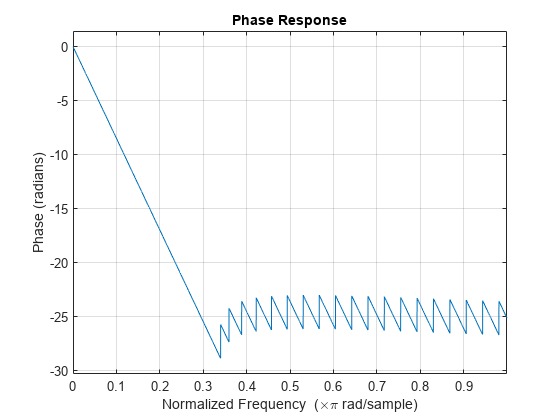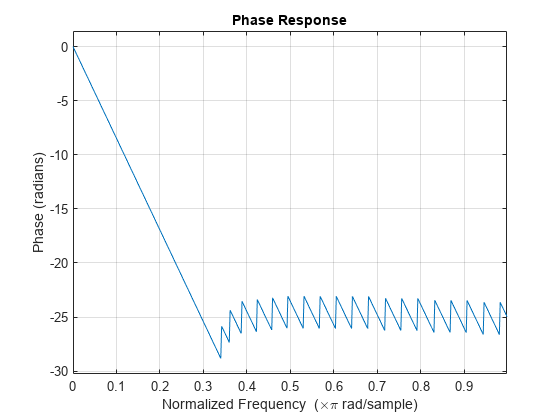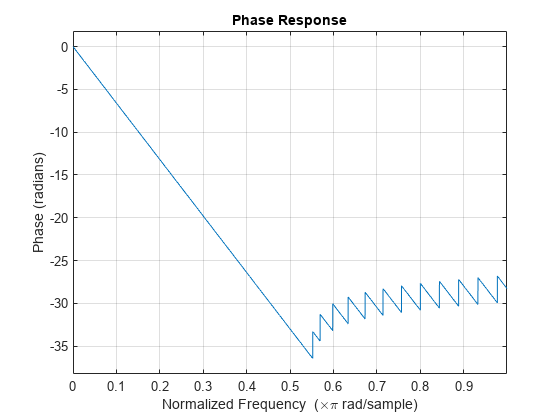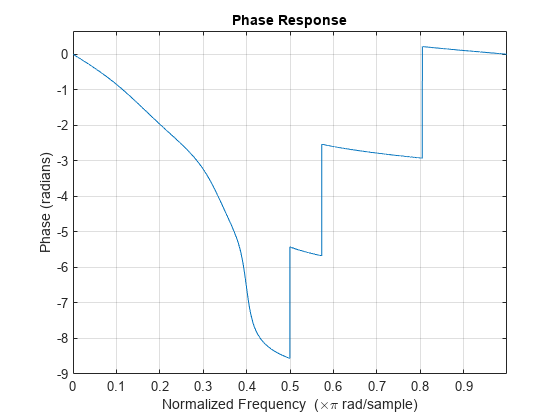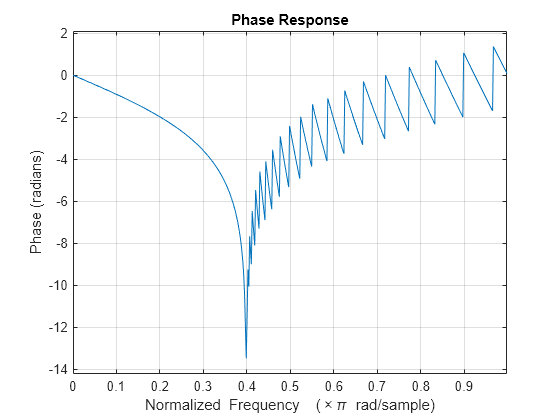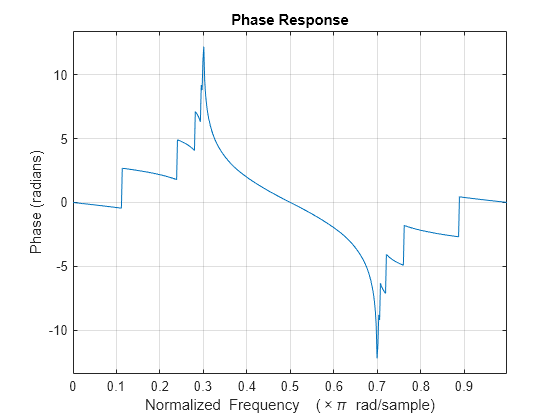phasez
Phase response of digital filter
Syntax
Description
[
returns the phi,w] = phasez(B,A,"ctf",n)n-point phase response of the digital filter represented
as Cascaded Transfer Functions (CTF) with numerator coefficients B and denominator coefficients
A. (since R2024b)
Examples
Input Arguments
Output Arguments
More About
Tips
References
[1] Lyons, Richard G. Understanding Digital Signal Processing. Upper Saddle River, NJ: Prentice Hall, 2004.
